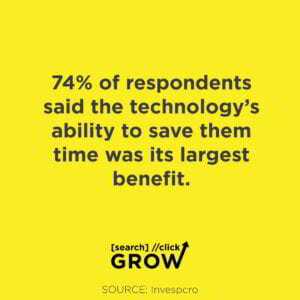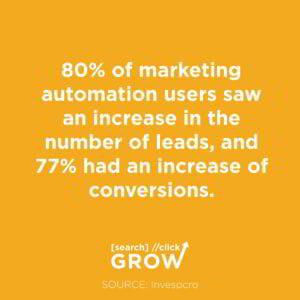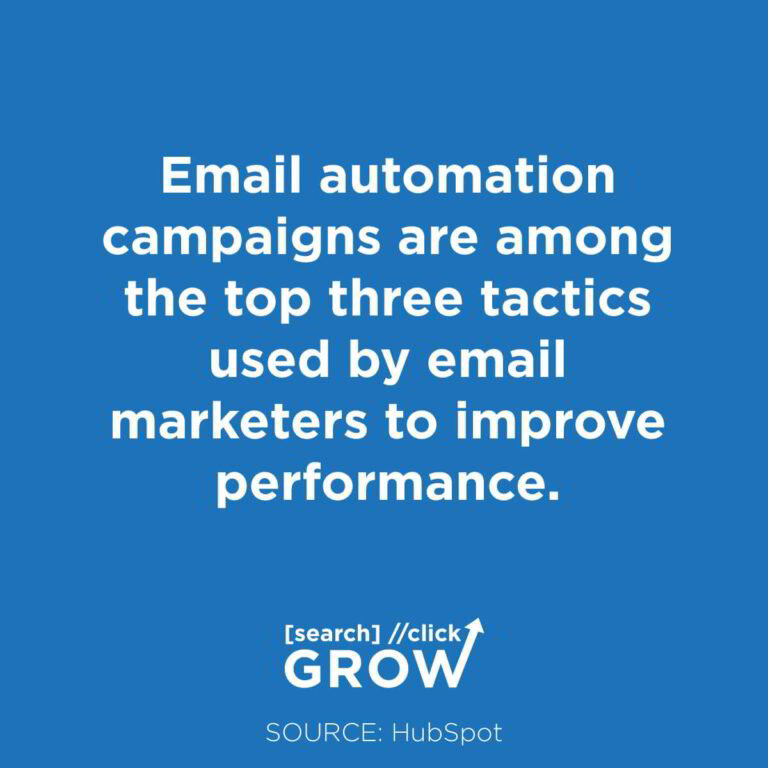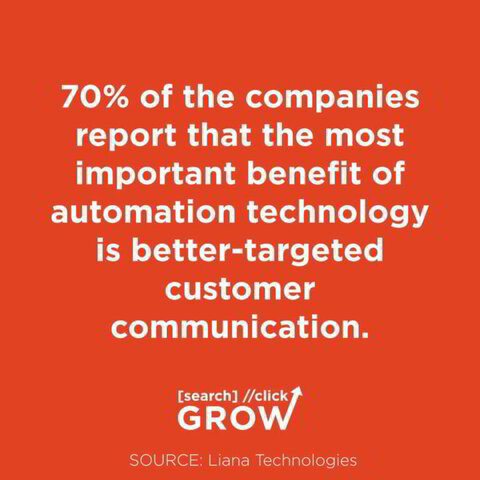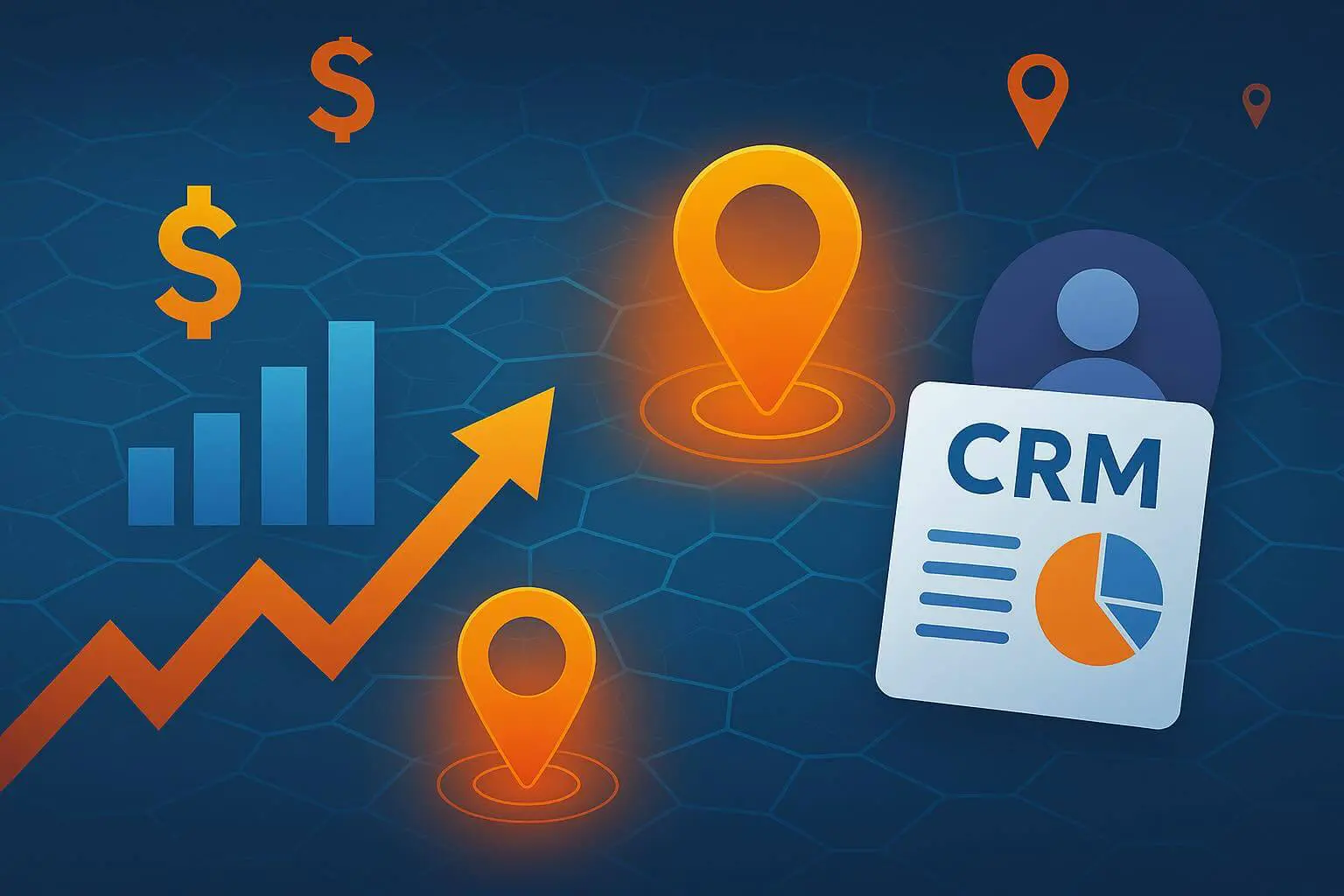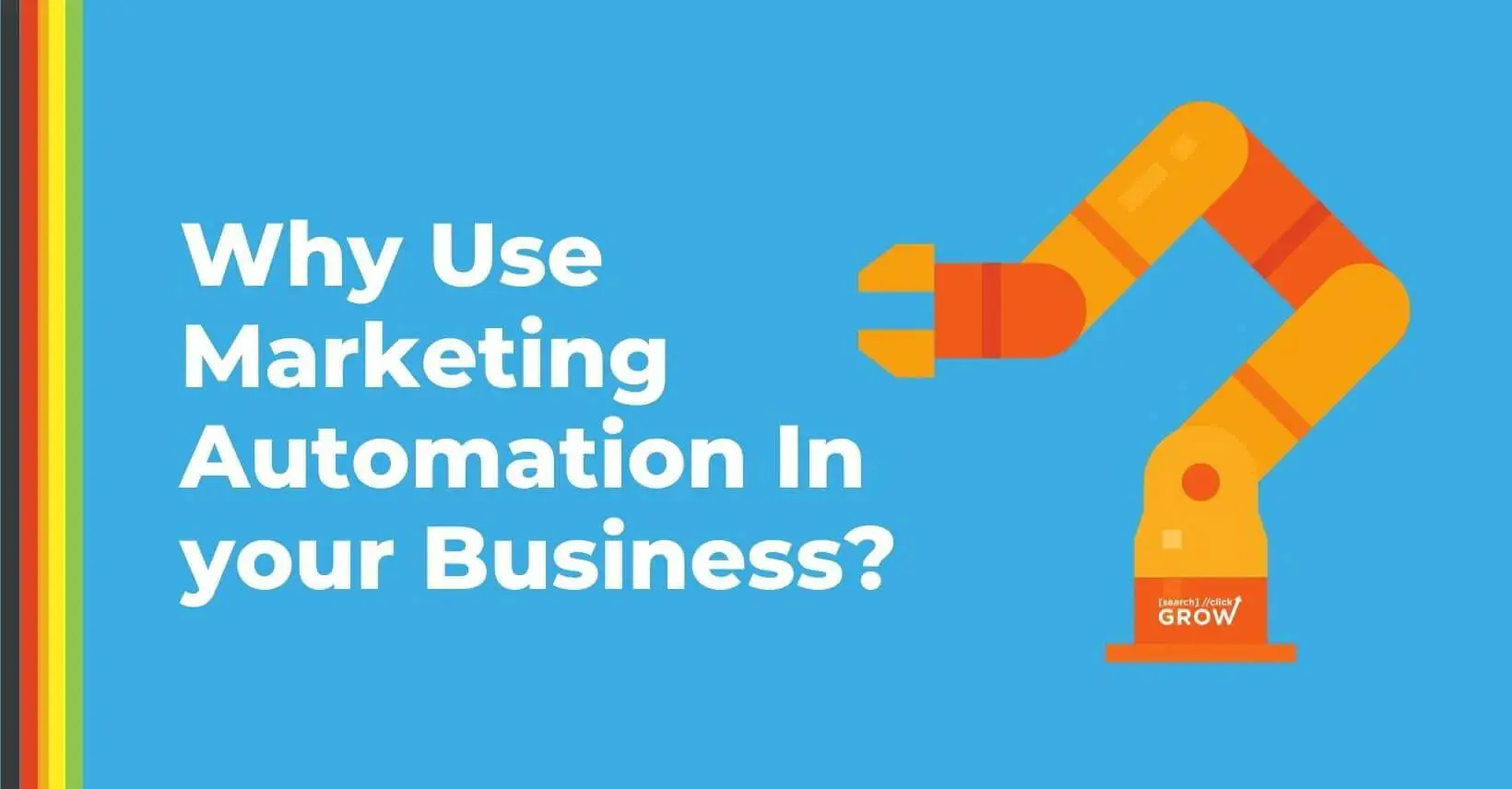
Why Use Marketing Automation In your Business
Micha McLain | Posted on |
Reading Time: 7 Minutes
Last Updated on July 17, 2024 by Mafalda Taborda
What if you could set up your marketing to work by itself?
All you have to do is sit back and wait for sales and leads to come through the door.
With just a little work, you can actually set up marketing automation to work almost completely on its own.
So why use marketing automation in your business?
Here are a few reasons most businesses have integrated automation into some part of their communications:
- Saves time
- It Generates More Qualified Leads
- Integrates Multiple Marketing Channels
- Drives Traffic and Sales
- Aligns Sales and Marketing Teams
- Uses Sophisticated CRM
- Increases Conversions and ROI
Let’s take a closer look at how marketing automation helps businesses grow and how it really works!
How Marketing Automation Helps Businesses Grow
Simply put, marketing automation software automatically runs your marketing for you.
While each software offers something different, it’s mainly designed to help businesses set up, prioritize, and execute all marketing activities.
This makes your business more streamlined and even allows your marketing team to monitor their efforts more closely.
Saves Time
The best part about this type of software is that it doesn’t replace anyone’s job, it just makes your marketing more effective and easier to manage.
Your marketing efficiency will increase, and you can automate manual, time-consuming tasks.
That frees up a ton of time! Marketing managers can also personalize all communications so your brand doesn’t look like a robot.
Of course, this takes a little finesse with messaging and web development in the beginning.
Generates More Qualified Leads
Why not automate lead qualification processes?
With marketing automation, you can set up multiple criteria-based actions with a lead scoring system, thus automatically generating highly qualified leads.
With an API to send these leads directly to your sales CRM, your team doesn’t have to wait for leads. In fact, you can send leads in real-time from a Facebook campaign directly to your call queue.
Integrates Multiple Marketing Channels
Wouldn’t it be nice if when a lead signed up on Facebook, you automatically connected their profile to your CRM?
You can do that with marketing automation tools, and there are workflows that go a step beyond this.
For example, you can automate responses in social messaging apps or reply automatically to mentions based on keywords used.
Drives Traffic and Sales
The ultimate goal for any marketing automation system is to drive traffic to your website for more sales or leads, while also nurturing customers and creating more opportunities.
That’s why automation is really helpful at the point where your customer converts or when closing the sale on a highly qualified lead.
Aligns Sales and Marketing Teams
Does it ever feel like you send out a marketing communication that doesn’t make it over to the sales team?
If it feels like there is a disconnect on your side, then your customers might be really confused when they try to get an offer that the sales team doesn’t know about.
With marketing automation, you can instantly connect your teams so that all communications and offers are shared.
In addition, marketing teams can get a better idea of what constitutes a highly qualified lead based on sales criteria used to identify audience segments.
Uses Sophisticated CRM
Most marketing automation software can integrate with your CRM and interface with your website or even digital marketing campaigns.
For example, you can integrate Facebook’s API with your marketing automation software to automatically send leads generated from your campaigns to your CRM, nurturing these leads even before your sales team makes a move.
Here are three software platforms that you can use:
- HubSpot Marketing Automation
- ActiveCampaign
- Sharpspring
Increases Conversions and ROI
One study found that B2B marketers increased their conversions by 10% just by implementing marketing automation.
How Does Marketing Automation Work
Marketing automation uses software to set up and execute marketing activities automatically.
For example, one type of marketing automation monitors your website for interactions, such as a customer who abandons a shopping cart.
Your automated email marketing program picks up on this activity and sends that customer an email reminding them of those items in the cart.
When it works correctly, marketing automation also offers triggered personalized experiences for your customers.
With the latest marketing automation software, you can create all kinds of tasks to automatically trigger at the perfect time, particularly for lead generation.
Here is a typical marketing automation workflow for an email program:
- You create an opt-in landing page with a downloadable offer.
- Customer signs up for offer, your marketing automation software triggers a program to start.
- The first email sends with the downloadable offer. However, the program will follow up in 3 days with another email that offers more information, such as a case study on the topic with a call-to-action button for a new offer.
- After a few days, you send another communication with more information on the topic with a button to request a demo. The customer clicks the CTA and triggers a notification to your sales team.
- The sales team follows up with the contact, knowing that they have more information about the product, which means they are a higher-qualified lead than when they first signed up.
Additionally, each of these emails can fill in information from the original opt-in form, creating personalized email sends for each action. For example, the subject line can feature the name of your lead.
Tips for Using Marketing Automation in Your Business
In the beginning, there were only a few types of marketing automation. One type of automated email marketing program so your business could automatically send personalized emails when an action was triggered.
Others also worked with social media, mobile ads, and even SMS messaging.
However, new data revealed that marketing automation is most effective for lead nurturing aka email marketing.
With that in mind, here are the goals of a typical marketing automation strategy for businesses today:
- Find more leads interested in your products
- Drive more qualified leads directly to your sales team
- Nurture leads so they convert more often
- Continue to nurture after-sales for more opportunities
The goal of any marketing automation program should be to enhance your current funnels and bring in more hot leads that your sales team can work quickly
Here are some tips for getting the most out of marketing automation for your business.
1. Set Your Goals First
The only way marketing automation works is if you have specific goals in mind. Some goals might include:
- Nurturing new prospective leads
- Re-engaging inactive customers or members
- Managing and sending leads to sales teams
- Monitoring campaigns and triggering new tests
- Responding to and engaging with customers on social media
For example, you want to automate re-engagement with old customers who haven’t purchased in 90 days. You can create an automated series of emails that nurture a sale and even change what email is sent, depending on what your recipient does with each email.
If the email is opened and the call-to-action button is clicked, then they might receive another email with related items or an even better offer if a sale isn’t made within 24 hours.
However, you don’t want to automate anything before you know what these goals are. Otherwise, you’ll pay more and get nothing out of the software.
When set up correctly, marketing automation should take tasks off your plate and free up time for other activities, while also offering unique data and reporting features.
2. Integrate Automation with Inbound Marketing Strategies
Marketing automation works best with inbound strategies.
For example, automation software automatically detects what your customers are looking for and can even change what products are shown on a web page based on browsing behavior.
To do this, you’ll need to create content that is unique to your customer’s needs.
For example, you can create an email marketing program that is triggered when a customer clicks on a certain product or navigates to a certain page.
These emails should provide useful, detailed information that continues to enrich the customer’s interest until they take action.
You can track customer interests and previous purchases, triggering an offer or new nurture series.
3. Don’t Forget About Current Customers
Marketing automation works best when you use customer data to find new opportunities. For example, you can re-engage members via a new email program that provides a personalized offer.
Your previous customers are the best group to sell to again and again because they’ve already bought something from you before.
If your business can keep current customers engaged with new content, you’ll always have customers returning to your business to purchase something new.
Your marketing automation programs can educate and encourage these customers to take advantage of your knowledge and expertise.
4. Segment Your Audience List
Audience segmentation is a necessary part of effective marketing automation. For one, you want to keep a close eye on your leads and know how each qualifies for your offer.
You can segment your list into targeted groups such as income, location, or other preferences.
Each segment or bucket will have different needs, challenges, and priorities. It’s up to your content within personalized communications to nurture these leads and convert them into customers.
5. Personalize Your Communications
Since marketing automation software integrates with your CRM, it can automatically pull information from your database about the customer’s name, location, and interests, depending on how granular your data is.
As much as you can, you should send specific and highly targeted content to your prospects.
You’ll be able to select certain characteristics such as “clicked XYZ product in the last 10 days”. This marketing program could automatically send a special offer to customers who triggered an event on your website.
6. Train Your Team
To customize your marketing efforts, your team will need to understand how to set up workflows and segment audiences into the right buckets. You’ll also need to work with a developer to integrate the following:
- Your sales CRM
- Website
- Email marketing
- Social media
Other channels that you want to automatically communicate through your marketing automation software
Businesses also must make sure that their staff is trained in form creation, compliance, and all marketing-related activities available.
Most software has a number of different ways to personalize communications based on any number of triggering events, from clicking on a certain product page to following you on Twitter.
One Last Thing – Why Use Marketing Automation
Marketing automation isn’t about selling. It’s about automatically delivering content that’s personalized to your prospects and customers.
This content is intended to nurture and avoid hard-selling approaches because they don’t work for today’s savvy digital audiences.
If you run inbound marketing and lead generation campaigns, marketing automation will be your best friend.
Not only can these programs streamline your qualification and lead delivery processes, but it’s so much easier to track and report on your marketing efforts across all digital marketing channels
Micha McLain
Related Posts
-

Micha McLain | Posted on |
How to Use CRM Zip Code Targeting to Maximize Your Ad ROIReading Time: 18 Minutes
Last Updated on October 17, 2025 by Mafalda Taborda
-

Micha McLain | Posted on |
Mastering the 5 Stages of the Customer Journey for ContractorsReading Time: 17 Minutes
-

Micha McLain | Posted on |
How to Build a High-Converting Website: The MENU FrameworkReading Time: 10 Minutes
Last Updated on February 27, 2025 by Mafalda Taborda

